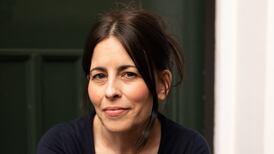The development of Temple Bar as Dublin’s cultural quarter “will make history in the life of this city”, Charles J Haughey declared 30 years ago.
Addressing the Dáil as taoiseach on July 2nd 1991, he predicted that it would become “a vibrant new living area, providing new jobs and attracting many visitors” as well as serving as “a showcase both nationally and internationally to emphasise the great potential for renewal in inner city areas where there is a cohesive plan, supported by Government.”
Haughey was introducing the Temple Bar Area Renewal and Development Bill, which established a State agency, Temple Bar Properties, to take charge of this “Government flagship project” for Dublin’s year as European City of Culture.
TBP’s remit was to build on what had been happening spontaneously in an area known for “Left Bank” ambience, by developing new apartments, speciality shops, restaurants, recording studios, craft workshops, theatres, film centre, art galleries, hotels and street markets.
1991 was a long time ago. It was the year that The Commitments was released, with Dublin’s rampant decay as its gritty backdrop. There were derelict sites and tumbledown buildings all over the inner city as well as in Temple Bar, where surface car parks occupied the areas that were to become Meeting House Square and Temple Bar Square.
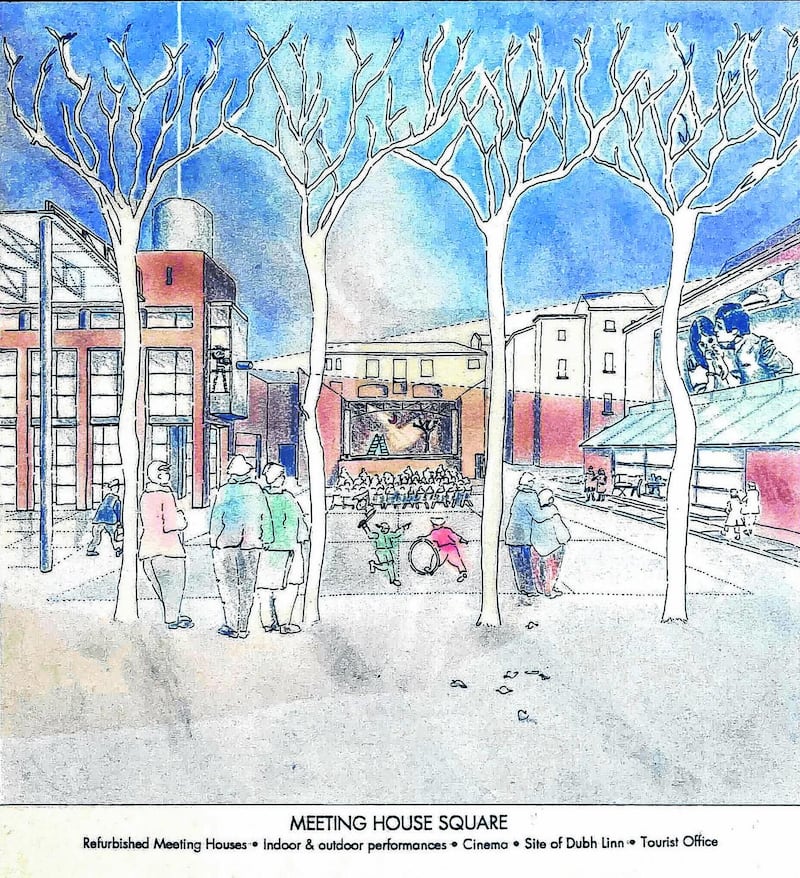
A two-acre site along Essex Street West, surrounded by a palisade fence, was used to store mobile libraries and as a daytime car park for officials in the Civic Offices.
Into the breach marched 13 talented young architects from Group 91, who won a hotly-contested competition for the Temple Bar Architectural Framework Plan in November 1991 with their vision of creating a series of “hearts and spines” to knit the area together.
Temple Bar Square, for example, was seen as “a carnival space for young people and tourists [with] a sense of Montmartre” in Paris, while Meeting House Square would have an open-air performance space at the rear of what became The Ark children’s cultural centre.
Residential accommodation would be spread throughout the area in a “dynamic mix” of refurbished buildings and purpose-built apartments, with student housing in the busy core, near the former Central Bank, and family housing at the western end, between Parliament Street and Fishamble Street.
Existing street blocks were to be remodelled for maximum residential amenity, with commercial uses on the ground floor and “airy new residents’ courtyards” at first-floor level.
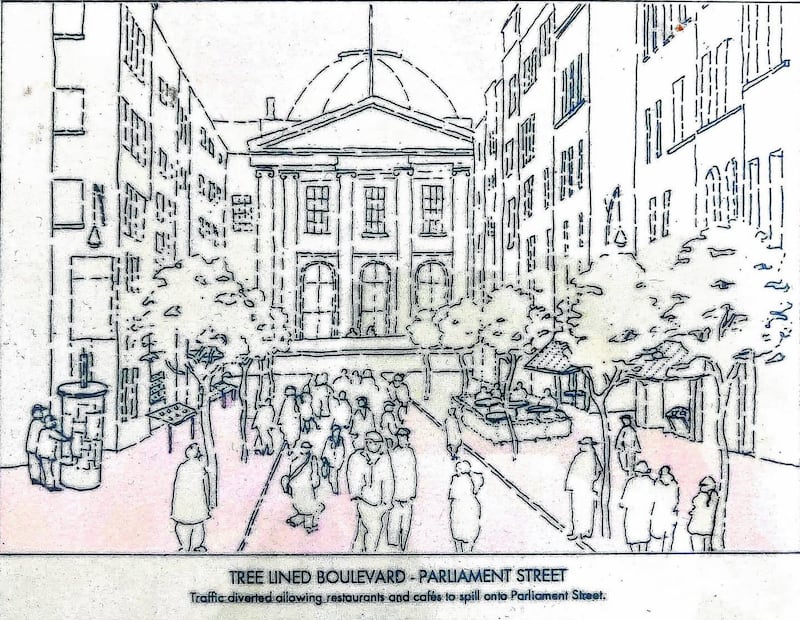
Group 91’s plan presented compelling images of a different kind of Dublin: Parliament Street as a tree-lined pedestrian boulevard – something that wasn’t realised until recent weekends – and Meeting House Square as an outdoor cinema, which did happen with considerable success, even before huge “umbrellas” were added in 2012.
The most beguiling of all showed a female figure stretching on a recliner in a minimalist apartment with a big picture window framing the dome of Adam & Eve’s church on Merchant's Quay.
The winning framework plan and 11 unsuccessful entries were all put on exhibition in Merchant's Hall on Wellington Quay, generating widespread public interest. It was the first time that a three-dimensional vision had been put forward for any urban area in Ireland; previously, what we got from planners was broad-brush zoning on colour-coded maps. And all of the architectural practices who had entered the competition were later commissioned by TBP to design major projects in the area, so everyone was a winner.
In July 1992, TBP stunned the development sector in Dublin by lodging 21 planning applications on a single day for £100 million worth of projects that included a new curved street flanked by Temple Bar Music Centre and Arthouse; The Ark, Gallery of Photography and other buildings surrounding Meeting House Square; the renovation of a listed building on Essex Street for Designyard, a new residential-over-retail building to form the southern side of Temple Bar Square and several other mixed-use schemes.
By mid-1997, it was clear that Temple Bar was turning into Dublin's version of Sachsenhausen, the tourist-thronged night-time zone of Frankfurt
Maeve Jennings, who joined TBP in her early 20s and project-managed the innovative Green Building on Crow Street and Temple Lane, recalled that the agency had “a mix of great people who, whatever our differing personal styles or beliefs, had all drank the Kool-Aid. Everyone thought the project was important for Dublin, for Ireland. Everyone was very proud of getting it done. The project won architectural prizes left, right and centre and was lauded throughout Europe and beyond as an example of good government intervention.”
As projects materalised in the mid-1990s, there were plaudits galore. Brendan Howlin, then minister for the environment, described Temple Bar as “a working model of sustainable development in an urban context”, London architect Ted Cullinan hailed it as “one of the best urban renewal projects in Europe”, and Barcelona-based architect David Mackay wrote: “I believe that we can stroll over the Liffey and wander through the lanes of Temple Bar and find, with Séamus Heaney, a future affirming itself under our feet”.
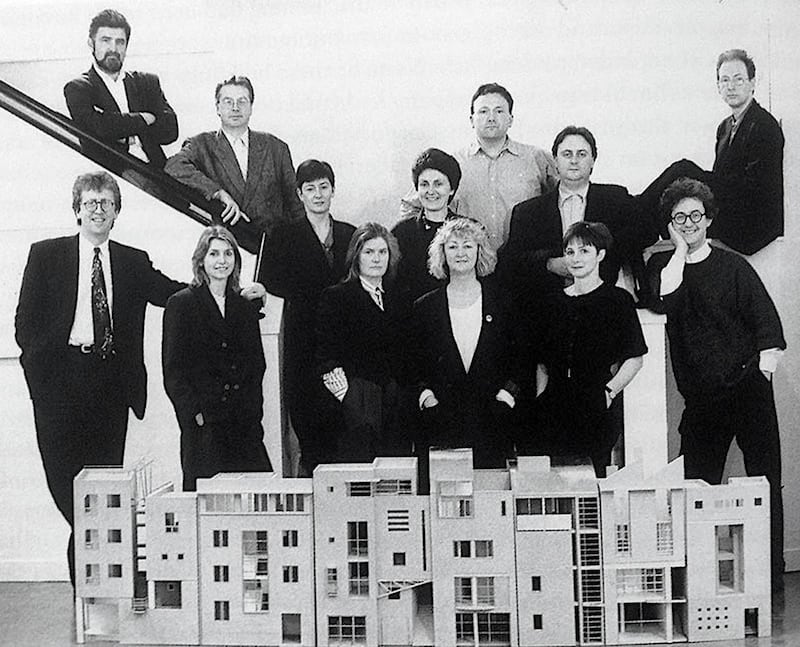
The first gig to be held in Meeting House Square inaugurated Ireland’s six-month presidency of the EU on July 1st 1996 with Anuna, The Corrs, Shaun Davey, Virginia Kerr and the National Symphony Orchestra entertaining 650 invited guests from all over Europe on a chilly night in Dublin’s newest public space. After all, the EU had pitched in to fund the cultural development of Temple Bar under its tourism programme, which used rapidly increasing pedestrian footfall in the area as a crude measure of its “success”.
But those of us who bought into the cultural quarter vision after queuing up for apartments from TBP in the early days could see that “putting bums on seats” was largely being achieved by filling pubs, with an acre of extra drinking space added to the area in its first five years.
Indeed, by mid-1997, it was clear that Temple Bar was turning into Dublin’s version of Sachsenhausen, the tourist-thronged night-time zone of Frankfurt where nearly every building on its quaint cobbled streets is either a bar, a restaurant, a nightclub or a tourist trinket shop.
Temple Bar has always been about contradiction and multiple uses, and the area is robust enough to sustain a high level of apparent conflict
In her introduction to TBP’s glossy 1996 book Temple Bar: The Power of an Idea, which represented the apotheosis of its achievements, managing director Laura Magahy suggested that the “creative tension” between residents and publicans “will in fact ensure the sustainability of the area. A kind of ‘area democracy’ will, I believe, maintain a balance whereby one sector will not prevail over another. Temple Bar has always been about contradiction and multiple uses, and the area is robust enough to sustain a high level of apparent conflict.”
In response to concerns about how it was turning out, the Dublin City Development Plan was amended in 1998 to incorporate an appendix on Temple Bar, with a planning objective to “secure a suitable mix of day and night-time uses and activities so that pubs, licensed premises, takeaways and similar forms of uses are not in conflict with or dominating other land uses, including cultural, residential and retail”. But this was quietly dropped from the city plan in 2005, because the tourism value of Temple Bar was too important.
By then, TBP had developed an extensive residential area in the west end and was succeeded by Temple Bar Cultural Trust as the area entered its “management phase”. Some of the cultural projects failed, almost inevitably. First to go was the Viking Adventure, installed in the former church of St Michael and St John, followed by Arthouse and Designyard; the latter served as a headquarters for TBCT until it was taken over in 2014 by Dublin City Council and turned into a hollow shell.
In 2015, the council commissioned Áit/Place to prepare a public realm plan for Temple. Bar, which recommended a whole series of interventions, not one of which has been implemented. A year later, GKMP Architects and Amsterdam-based Redscape were appointed to renovate Temple Bar Square, drawing up a detailed plan that seemed set to go until they were dismissed in December 2019, and the project was taken over by the roads department of the council. What it has in mind is anyone’s guess.
Ten years ago, the Bad Ass on Crown Alley - a much-loved family restaurant in the good old days - was turned into a traditional Irish pub with all the trappings, including an amplified live band that created serious noise issues for local residents, while the former North Face clothing store on Temple Lane is slated to become a “bespoke whiskey emporium”, to be operated by the Temple Bar Pub with a full seven-day publican’s on-licence, thanks to An Bord Pleanála overruling Dublin City Council’s decision to refuse permission and the recommendation of its own planning inspector.
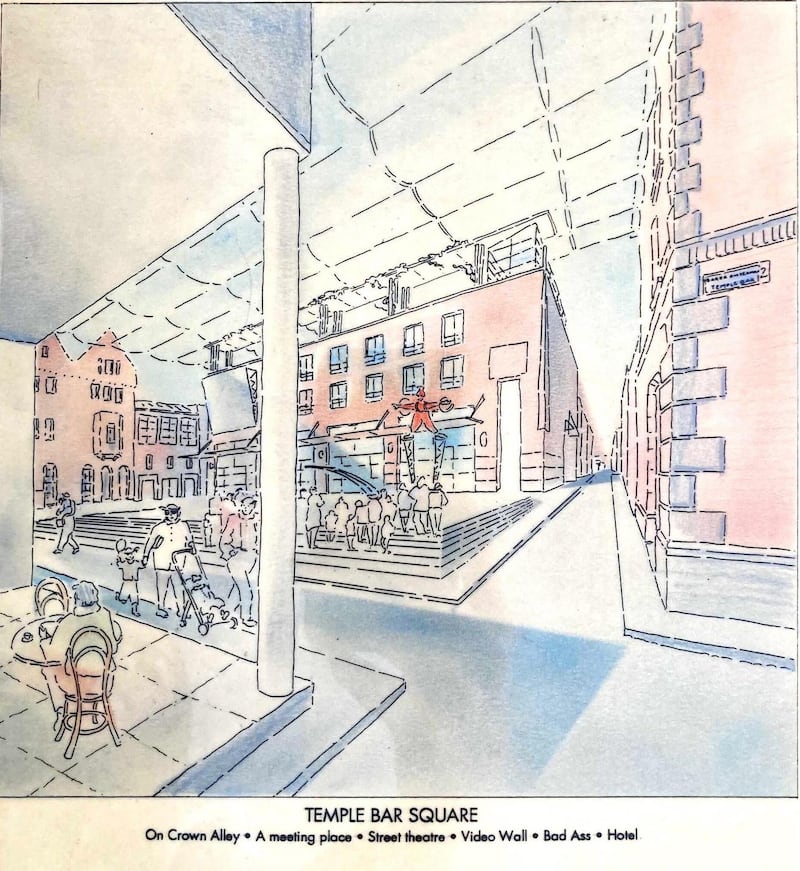
Temple Bar residents are anxiously awaiting the board’s decision on our appeal against plans by the Merchant's Arch Pub to demolish one side of the narrow laneway for a small “boutique hotel” with a “restaurant” at ground-floor and basement levels, opening onto Temple Bar Square; we fear that it would become yet another pub, just like the Bad Ass.
We have also called on Dublin City Council to safeguard Temple Bar by designating it as an Architectural Conservation Area, given that there are only three sites remaining to be developed.
These include a derelict site on Fishamble Street, just across from the Civic Offices, which is in the council’s ownership and would be ideal for an affordable apartments scheme, but it appears to have been forgotten about. Just like Temple Bar, really.
But not by the UCD School of Architecture, which is staging a “shopfront exhibition” in the ex-Arthouse (and ex-FilmBase) building on Curved Street, illustrating the area’s transformation over the past three decades, for good or ill. So that’s something to celebrate on its 30th anniversary.
Frank McDonald is former environment editor of The Irish Times and a resident of Temple Bar since 1995.









